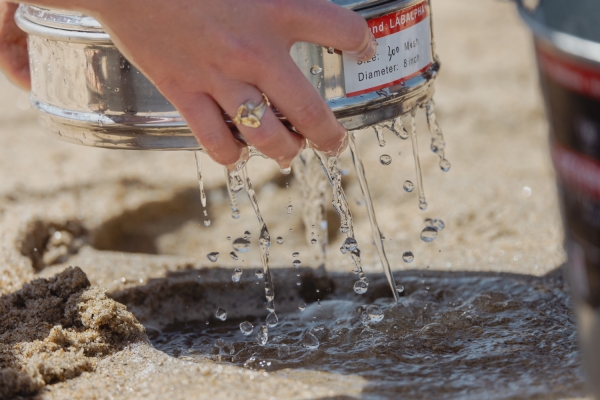On the edge of California’s Monterey Bay, ecologist Matthew Savoca and a team of volunteers sift through sand and seawater for microplastics, one of the planet’s most pervasive forms of pollution.
On the edge of California’s Monterey Bay, ecologist Matthew Savoca and a team of volunteers sift through sand and seawater for microplastics, one of the planet’s most pervasive forms of pollution.
Originating in everyday items, these bits of plastic smaller than a sesame seed turn up just about everywhere researchers have looked – including in our own bodies and in habitats from alpine mountains to the deep ocean. Along the high-tide line of Carmel River State Beach, Savoca’s team finds them washed up by the bay’s lapping waves.
“We know there are hundreds of trillions of microplastic particles in the world,” said Savoca, a research scientist at the Stanford Doerr School of Sustainability’s Hopkins Marine Station, about eight miles north of the field site. But questions about how microplastics disperse, for how long, and where they come to rest remain unresolved.
Read more at: Stanford University
Researchers Steve Lonhart and Libby Mohn filter sand and ocean water samples to search for microplastics in the ocean. (Photo Credit: Andrew Brodhead)




